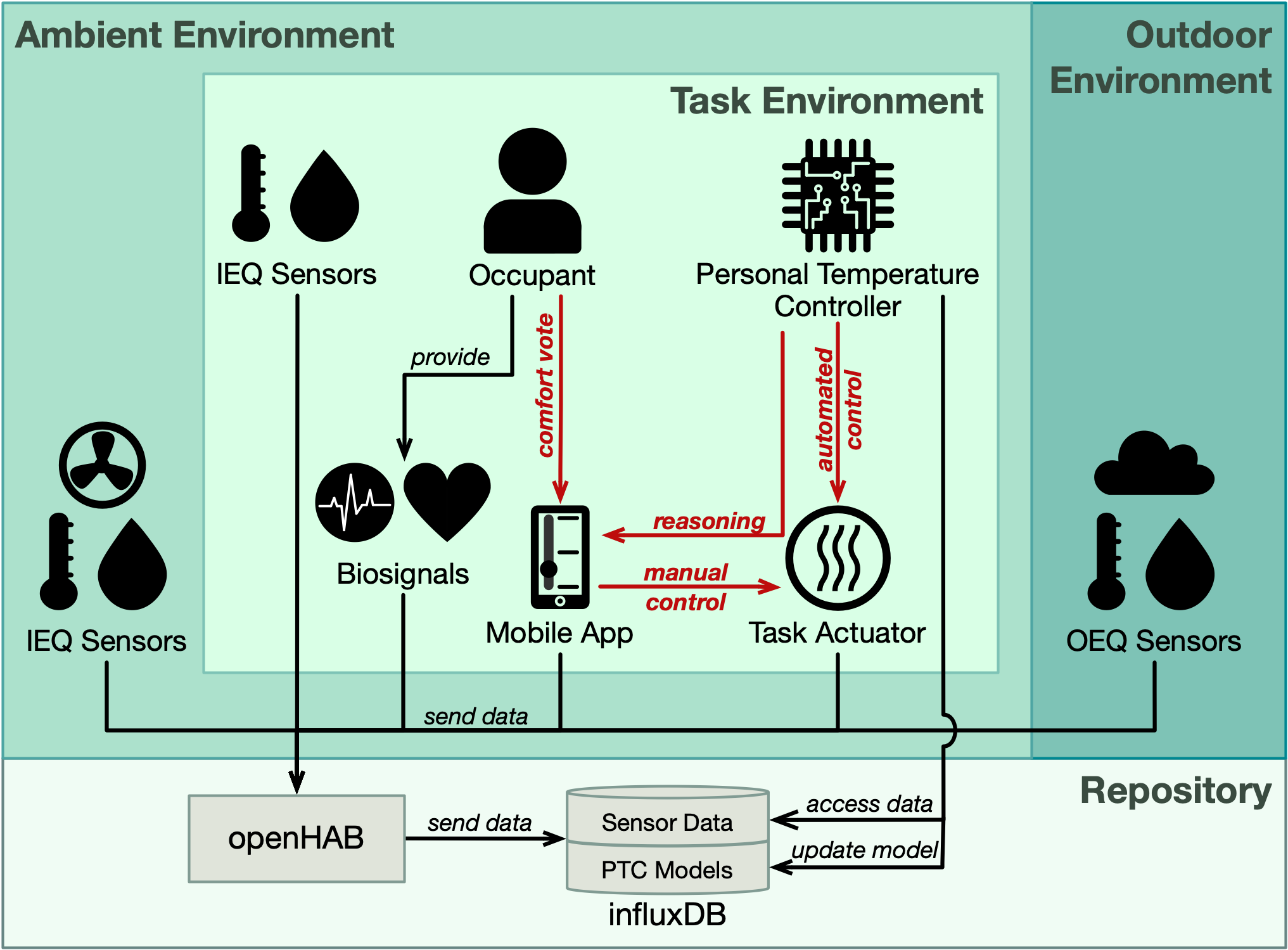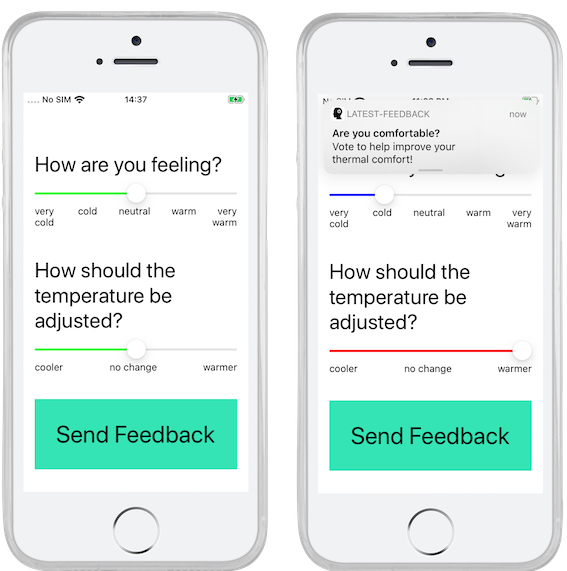This is the official repository that implements the following paper:
Nadine von Frankenberg, Patrick Ruoff, Bernd Bruegge, and Vivian Loftness. 2020. LATEST: a learning-based automated thermal environment control system. In Adjunct Proceedings of the 2020 ACM International Joint Conference on Pervasive and Ubiquitous Computing and Proceedings of the 2020 ACM International Symposium on Wearable Computers (UbiComp-ISWC '20). Association for Computing Machinery, New York, NY, USA, 573–579. DOI:https://doi.org/10.1145/3410530.3414591
At the Intelligent Workplace of Carnegie Mellon Unversity we developed a Learning-based Automated Thermal Environment control SysTem, LATEST. This repository contains the code for the model selection part of the project, which we describe in doi... Additionally, we publish the data set that was collected to validate the our approach in the data repository.
As a part of this project, we conducted a case study at the Robert L. Preger Intelligent Workplace. We monitored three participants over more than three months while they were working at their usual desks and controlled a radiant heating panel with our iOS application. The figure below shows a high-level perspective of the setup. More details can be found in the masters_thesis.pdf.
This setup was used for two consecutive phases.
For machine learning we need data. Therefore, in the first phase of the study, the participants were able to control a infrared radiant heating panel at their desks via iOS application. We designed the application's interface such that the subject's feedback about their thermal comfort is directly connected to their heating panel.
When a participant feels cold they adjust the scroller, like in the screen on the right, and press the send-button to turn on their heating plate. This feedback collection approach is designed to be only little intrusive and can be made even less so by removing the feedback part for a non-scientific real-world application.
The raw data collected with this setup is preprocessed before models are fit. The cleaned data is available at the data repository
After preprocessing, the data can be used for training. In this project, we used the scikit-learn library and fastai to compare seven personalized models for every participant. In particular, we designed and implemented a (to our knowledge) novel interval-stratified k-fold cross-validation and used it for comparing the models' performances. The best models were then parameter-optimized with a randomized grid search and the final model with the highest f1-score was deployed. The respective code is in the model_selection folder.
For transparency, we also included a SHAP-explainer for every deployed model. They compute the Shapley values for every prediction and give the participant a reasoning for why the heating panel was turned on or off.
If the code does not run in your environment, check conda_env.yml for the packages and versions used.

